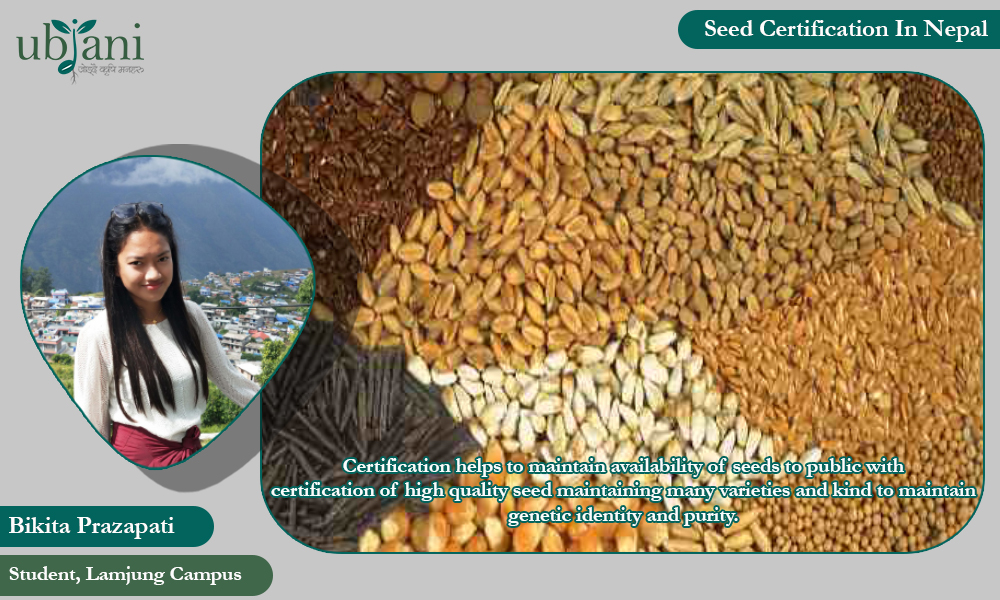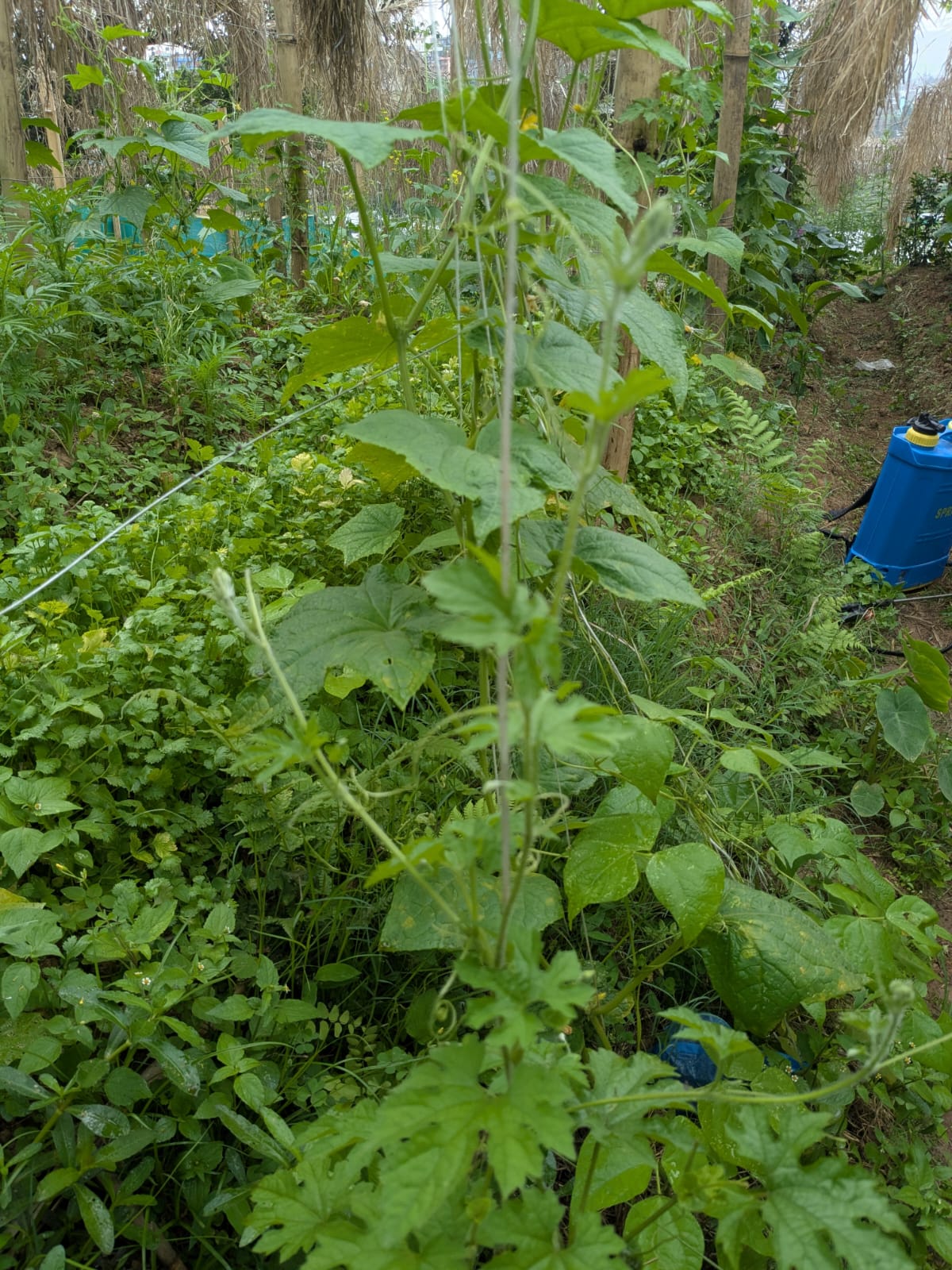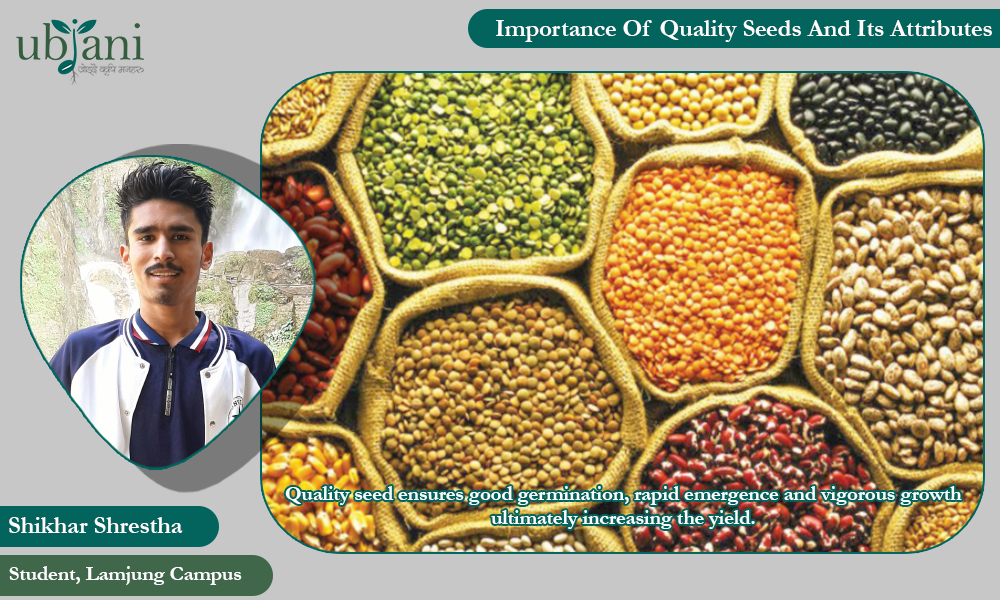
Seed is ripened ovule containing embryo. Seed is symbol of beginning in scientific agriculture, basic input and most important catalyst for other input to be cost effective. Seed certification is the legal process to maintain high quality seed and make its availability for distribution. This process was first started in Nepal with wheat.
Certification helps to maintain availability of seed to public with certification of high-quality seed maintaining many varieties and kinds so that to maintain genetic identity and purity. The main responsible seed certifying body in Nepal is Seed Quality Control Center (SQCC), MoAD. Regional seed testing lab also work in their certification procedure. Nepal has adopted the holistic vision for development of Nepal’s seed sector included in ‘National Seed Vision 2013-2025’. In Nepalese context, seed are properly labeled and recorded in register, information like species (Latin and Nepali name), date of collection, place of collection, (district, zone, etc.) should be included in the list.
Procedure of seed certification
1. First of all, the certified grower should apply for the registration to the concerned certifying agency along with their personal information and purpose of application.
2. As the application gets approval they are provided with genetically and physically pure breeder seed along with little funding.
3. After collecting breeder seed grower sow those seed in the isolated field so as to protect them from any kind of contamination. The sowing report should be prepared and provided to concerned agency.
4. Certifying agency then send the field inspector or officer to inspect the field to verify the factors affecting purity and health of seed. Field inspection takes places in different stages of crop such as vegetative state, flowering stage, fruiting, pre-harvesting, harvesting and post-harvesting stages. From these inspections the inspector also makes the report in different indices of seed.
5. If the report is satisfactory, fulfills all the criteria of purity and health, then it is collected and stored or transferred to nursery for sowing or storage along with tagging with the tags of different tags which includes the name of producer, name of species, date of collection, locality factor, climatic condition, soil condition and quality of seed, date of dispatch and condition of seed at the time of dispatch.
The well-organized seed certification should be able to accomplish the following objectives:
1. Systematic increase of superior varieties
2. Identification of new varieties and their rapid increase provision for continuous supply.
3. Maintaining certain ‘Seed Multiplication Ratio (SMR)’ based on its demand and requirement. SMR is the number of seeds produced from single seed
Classes of Seeds
1. Breeder seed
Breeder seed is the vegetative propagating material which is directly controlled by the plant breeder for breeding programme. It is genetically and physically pure seed. It is supervised by the qualified plant breeders so as to protect it from any contamination. This type of seed is produced in very limited amount and other seeds are the progeny of this breeder seed. Breeder seed is labelled by the golden yellow color certificate.
2. Foundation seed
Foundation seed is the progeny of breeder seed. It is produced under the supervision of certification agency and also certified by it. It is also physically and genetically pure seed like breeder seed. It is produced in very limited amount but little bit more than breeder seed. Foundation seed is labelled by the white color certificate. Foundation seed is then distributed to the registered growers.
3. Certified seed
Certified seed is the progeny of foundation seed. It is produced by the registered seed grower under supervision of seed certification agency. Certified seed is the seed which is produced for the distribution of seed to the farmer for the commercial cultivation. So, it is produced in large amount. This type of seed is labelled by the blue color certificate. There are two sub categories in certified seed:
a) Certified seed (I)
b) Certified seed (II)
Importance of seed certification
1. Maintains high quality of different kinds and varieties of seeds among the farmers through certification.
2. Ensures the acceptable standard of seed viability, vigor, purity and germination percentage.
3. Achieves objective of plantation.
4. Better yield, drought tolerance, herbicides tolerance, pest tolerance and other improved traits.
5. Helps knowing the quality of mother plant.

















